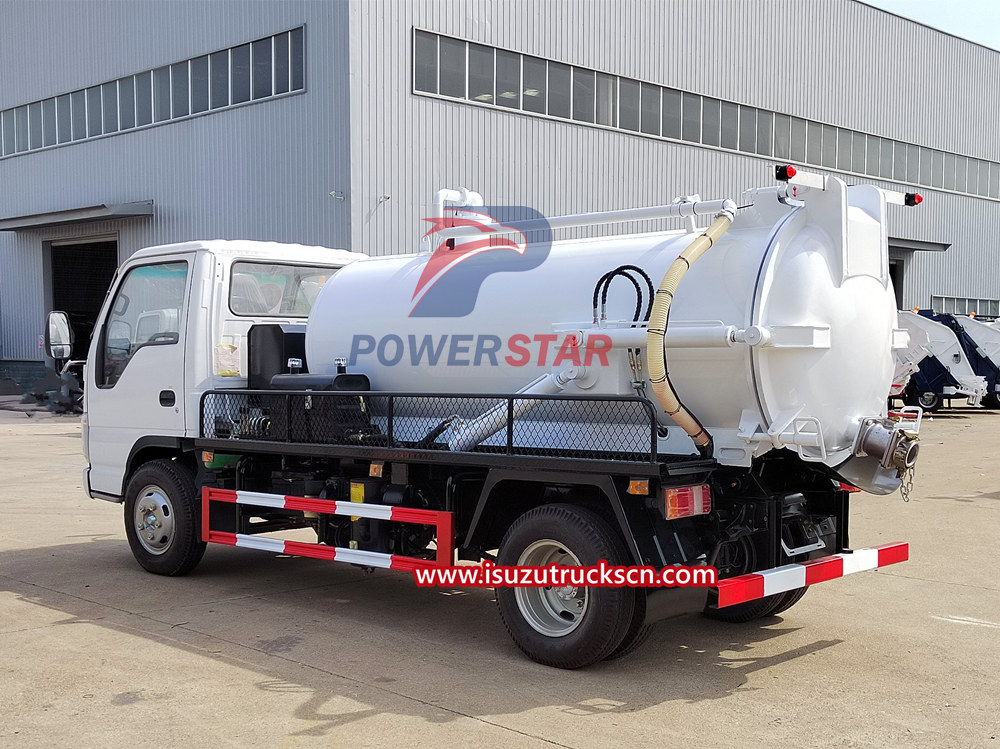


The negative pressure suction system of the Isuzu vacuum tanker truck is its core component. This system generates strong negative pressure through decompression, quickly sucking waste into the storage tank. At the same time, after being processed by the filter, solid particles and liquids will be effectively separated to ensure that the discharged waste will not cause secondary pollution to the environment. Pumps can transport waste to off-site treatment facilities for further processing or disposal. In this way, Isuzu vacuum tanker truck can not only complete waste collection and cleaning efficiently and quickly, but also reduce the spread of waste pollution, fundamentally protecting the environment and improving the quality of life.
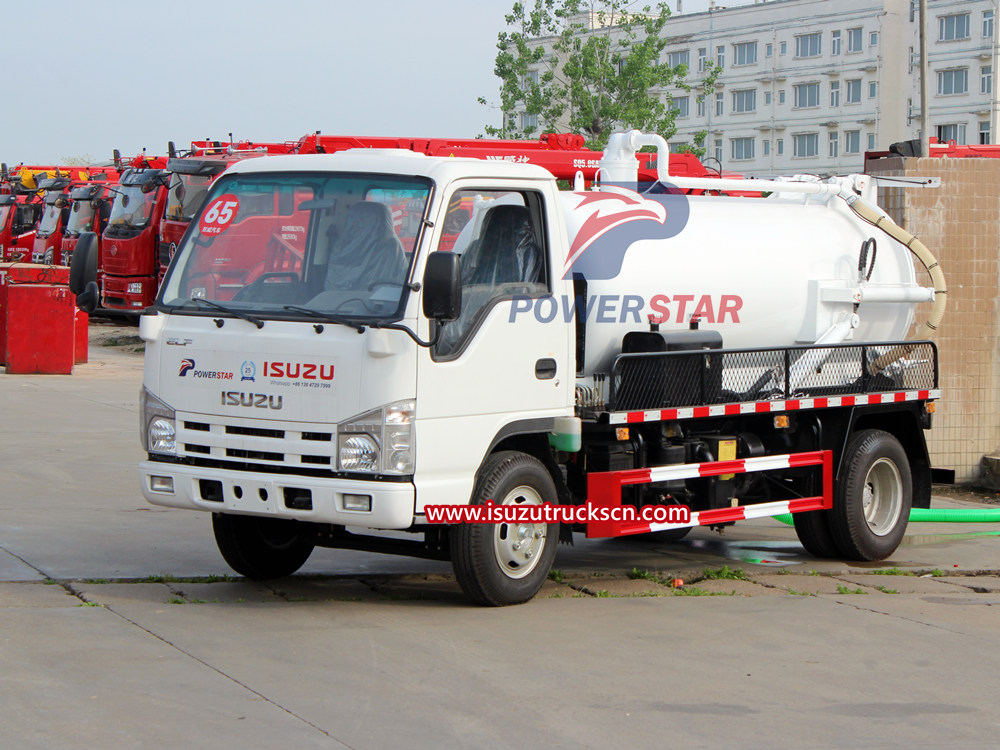
A.Main operating systems of Isuzu vacuum tanker truck and maintenance of sewage suction trucks:
①.Pneumatic reversing valve of sewage suction truck.
②. Power take-off lever.
③. Vacuum pump.
④. Manual reversing valve.
⑤. Four-way valve.
⑥. Oil and gas separator.
⑦. The sewage suction truck tilts the cylinder and opens the door cylinder.
⑧, dump ball valve, drainage ball valve.
⑨. Sewage suction truck tank door locking device.
⑩. Sewage suction hose and alarm.
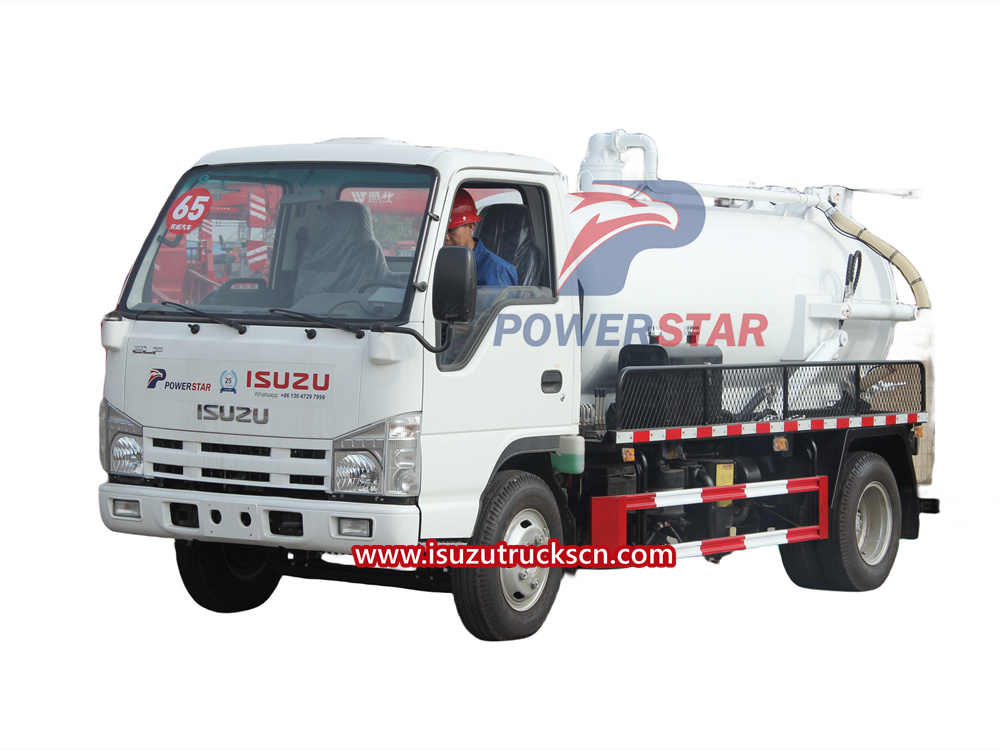
1. Precautions for the conveyor:
Before operating theIsuzu vacuum tanker truck, check whether the transmission shaft, directional coupling shaft, etc. are abnormally shaking or loose. If the defective parts are not repaired and the work is carried out, it will have adverse consequences on major devices such as pumps and power take-offs.
2. Oil and gas separator of Isuzu vacuum tanker truck (for vacuum pump lubrication) The separated engine oil can be reused as vacuum pump lubricating oil, but the separated water will be stored at the bottom of the tank, so it must be drained after the operation of the sewage suction truck. If you forget to drain, it will Suction into the pump can cause problems such as sintering. If the oil is used for too long, the lubricity and air tightness will be reduced. Therefore, the interior should be cleaned regularly and the lubricating oil should be replaced. When the vacuum degree is about 93 kPa, the oil level should be replenished to the middle mark under the dipstick. Use HT-40# mechanical oil and clean the interior once a month.
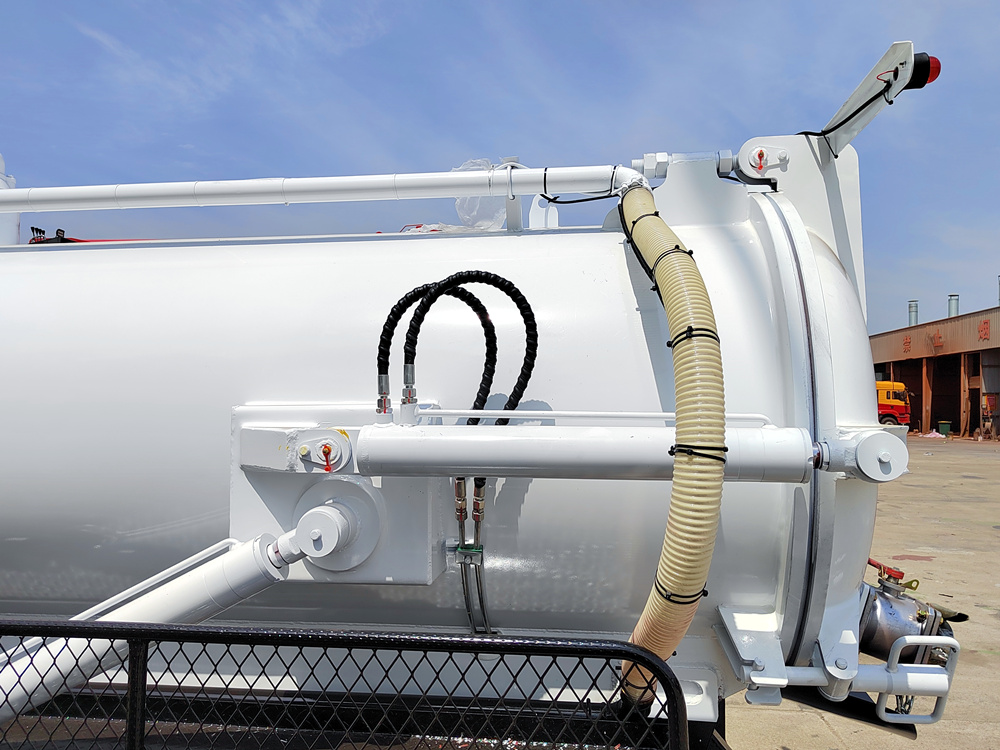 3. Isuzu vacuum tanker truck one-way valve water and gas separator. When the automatic suction stop device in the Isuzu vacuum tanker truck tank is full and malfunctions, it is a device that automatically works to prevent sewage from entering the pump of the Isuzu vacuum tanker truck. If it sucks in sludge with a lot of oil content, it will easily corrode the ball seat and the ball. In addition, it is easy to accumulate sewage during operation, so the float must be drained and cleaned after the operation.
3. Isuzu vacuum tanker truck one-way valve water and gas separator. When the automatic suction stop device in the Isuzu vacuum tanker truck tank is full and malfunctions, it is a device that automatically works to prevent sewage from entering the pump of the Isuzu vacuum tanker truck. If it sucks in sludge with a lot of oil content, it will easily corrode the ball seat and the ball. In addition, it is easy to accumulate sewage during operation, so the float must be drained and cleaned after the operation.
4. Clamping device for the rear tank door of the Isuzu vacuum tanker truck. After long-term use, dirt will occur inside and the hand wheel must not be tightened. Therefore, the inside should be disassembled and cleaned every six months. At this time, grease should be replenished appropriately.
5. Add oil: Use 20# mechanical oil for hydraulic working oil blender and 30# mechanical oil in summer. Add lubrication one by one according to the main operating systems ①-⑩ of the sewage suction truck.

B. How to troubleshoot Isuzu vacuum tanker truck and troubleshoot parts of Isuzu vacuum tanker truck:
1. The sewage suction truck does not suck in or discharge: When the vacuum pump of the sewage suction truck does not rotate, please check whether the power take-off gear is not working. Or the transmission shaft does not rotate, and the rotor spindle in the pump is broken.
2. When the vacuum pump of the Isuzu vacuum tanker truck is rotating, if the sewage suction truck does not inhale or discharge, please check:
①. The sewage suction truck discharges air from the exhaust pipe (the degree of vacuum cannot be increased). The causes include loose rear tank door joints, failure to close the ball valve, or damaged flange gaskets.
②. If the sewage suction truck does not discharge air from the exhaust pipe (the degree of vacuum cannot be increased), check whether there is any foreign matter in the four-way valve and whether the sealing ring in the handle is damaged.
③. When the vacuum pump of the sewage suction truck reaches the maximum temperature, check whether there is water accumulation in the one-way valve water-gas separator, or whether the pump suction pipe is blocked.
④. The sewage suction truck can only drain water but not inhale. Check whether the tank is full and whether the buried suction pipe is degummed. If the buried suction pipe is degummed, causing the steel wire inside the suction pipe to be blocked, the sewage suction hose must be replaced at this time. In addition, check whether there is water accumulation in the one-way valve water-gas separator. Is there any foreign matter blocking the head of the sewage suction pipe?
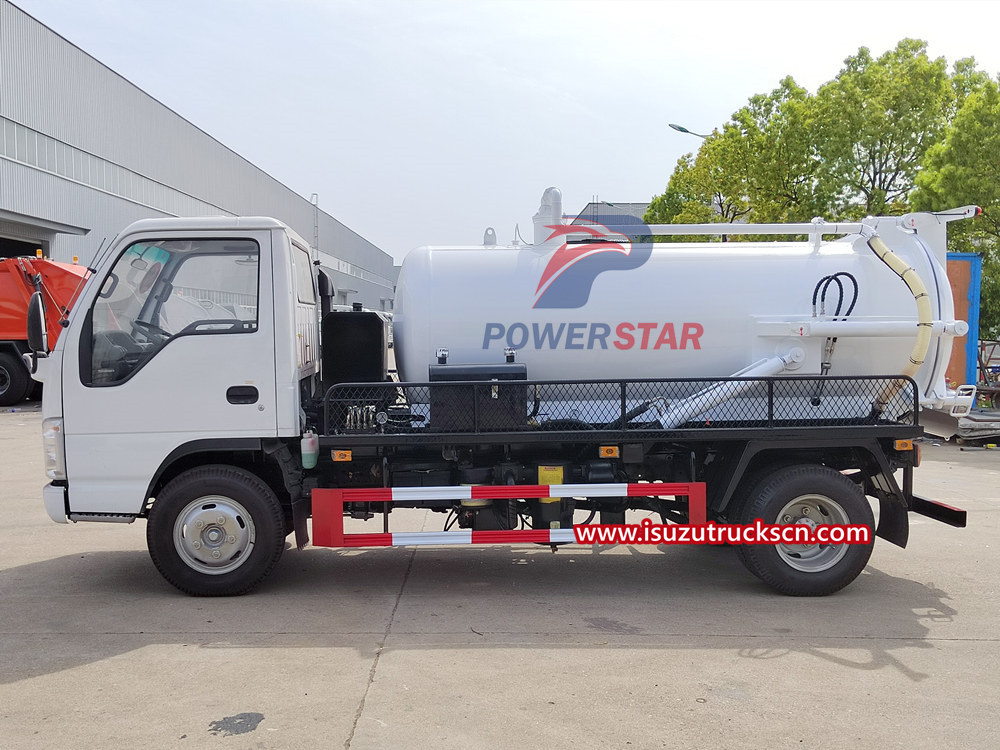
C. Instructions for use of the Isuzu vacuum tanker truck liquid level control and alarm system: The Isuzu vacuum tanker truck liquid level control and alarm system is an updated product of our company. It has the advantages of beautiful design, excellent performance, easy installation, and long service life. Follow the following steps:
1. Set the tank door opening and closing lever of the manual reversing valve of the sewage suction truck to "open". Before opening, confirm that the pressure in the tank is equal to atmospheric pressure. If the tank door is opened under negative pressure, the tank door seal will be damaged. rings and cylinders.
2. For the recovery operation after discharging the sludge, place the hydraulic cylinder operating lever in the "down" position, and check the following after safely descending:
3. Check whether there is dirt on the tank door flange and sealing ring, and scrub them clean with a brush.
4. Set the tank door opening and closing lever to "close" and close the door safely.
5. Insert the screw of the clamping device into the screw hole on the side of the tank and turn the handle until the rear tank door is pressed tightly.
